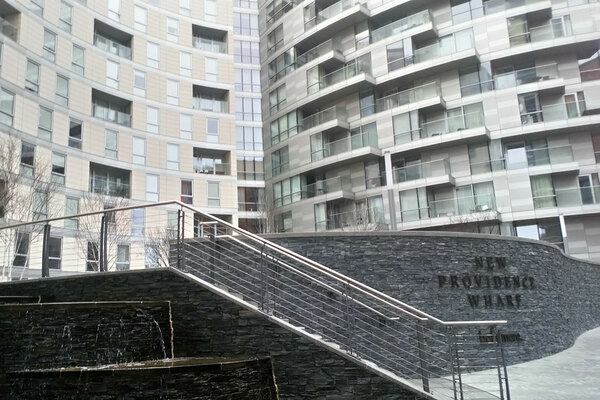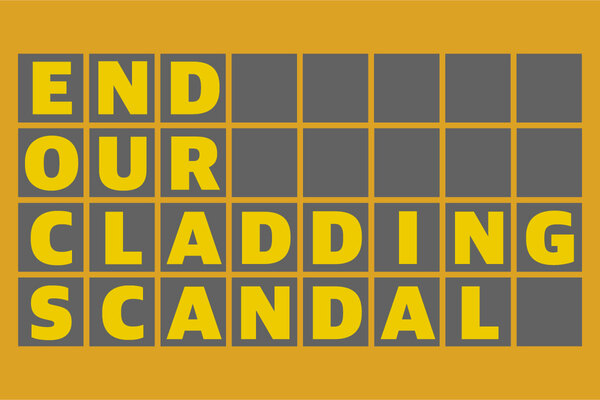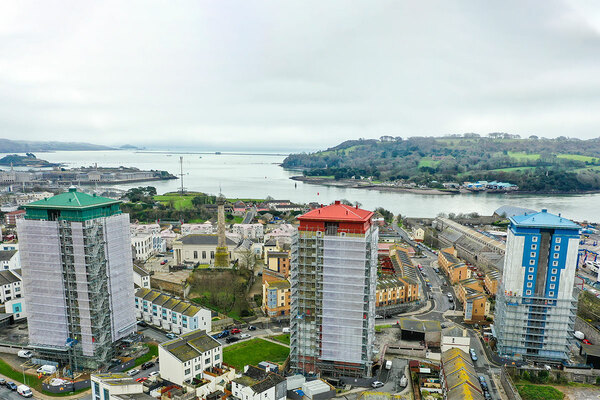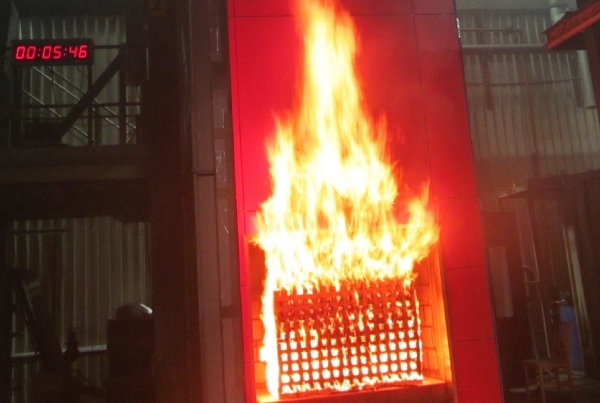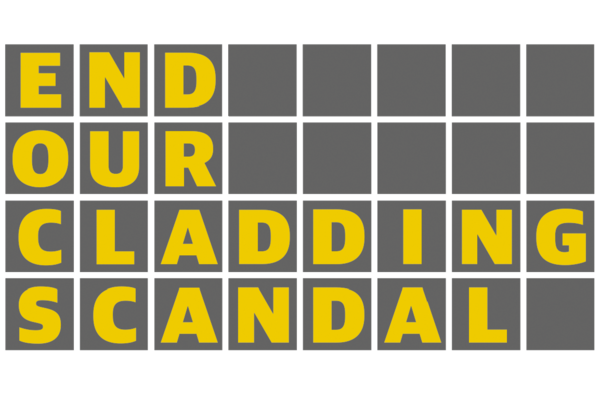
The ongoing cladding scandal leaves people in limbo – it must end
Christian theology knows a bit about limbo – it isn’t a position in which residents of dangerous towers should be left, write bishops Graham Tomlin and David Walker
Talk to people in the North Kensington area and it won’t be long before you encounter a deep sense of betrayal.
The community around Grenfell Tower felt alienated even before the fire, feeling they had little control and say in decisions on housing and the local built environment that affected their everyday lives.
The fire itself, of course, had a seismic impact on the local community, which continues to live with the devastation that hit them on the 14 June 2017.
Yet, even now, nearly two years on, things are not much better.
Grief takes time to take its course, but is complicated when you feel that your brother, mother, aunt or friend died needlessly and that since then nothing much seems to have changed.
Meanwhile, many people still live with anxieties over reports of toxic air and soil in the local neighbourhood, ongoing mental health issues of depression, fear and the difficulty of getting back to normal life.
The public inquiry has paused. Having heard evidence for seven months, since December of last year nothing has happened while the lawyers prepare for the next stage, working through the vast pile of papers and documents related to the fire.
“It is hard to move on with your life while so much remains unresolved, the causes of the fire remain unclear and those responsible for what happened have not been identified”
However understandable the delay, the effect on the bereaved and the survivors is significant. It is hard to move on with your life while so much remains unresolved, the causes of the fire remain unclear and those responsible for what happened have not been identified.
And it is not just the Grenfell community. Across the UK, the cladding that seems to have played a major role in the Grenfell Tower fire was found on nearly 500 buildings, around 170 of them private residential blocks.
Only 10 of these have had their cladding removed.
A stand off between government and private owners, each expecting the other to pay up, has left leaseholders stuck in the middle, with neither government nor freeholders are wanting to foot the bill, waiting for the other to blink first.
While the announcement earlier this month of a fund for aluminium composite material-clad towers was welcome, many blocks have other materials and are therefore not covered. As a result, leaseholders are being presented with bills of up to £80,000 to get rid of the cladding on their buildings, even though it is not their fault that the cladding was there in the first place.
They too are stuck in limbo, unable to pay the bills, yet finding it increasingly stressful to live in a property that feels vulnerable to the same fate as Grenfell.
We are more aware of mental health issues than ever before and both in North Kensington and in residential developments around the UK, this issue is not going away, it is getting worse. Studies suggest higher levels of anxiety, sleeplessness, depression, suicidal thoughts as a result of what is increasingly being called the cladding scandal.
“They too are stuck in limbo, unable to pay the bills, yet finding it increasingly stressful to live in a property that feels vulnerable to the same fate as Grenfell”
Christian theology knows a bit about limbo. Often described as purgatory, it is imagined as a state between life and death, or as Dante put it: “Here may indeed be torment but not death.”
It is not a place to stay for long, not a place of permanence. Yet homes are meant to be places of stability and longevity.
When one of us asked a survivor of Grenfell why the comfortable hotel he had been staying in did not feel like home, his reply was “because it is temporary”. We cannot live for long in limbo, in transitory suspension.
We human beings need hope and a future and cannot live without one. The only obvious solution is for government to set aside a fund to enable the removal of cladding from residential blocks and set a deadline as to when it needs to happen by. Only then will this tragedy begin to find some resolution and people will be enabled to rebuild their lives.
Graham Tomlin, Bishop of Kensington and vice chair of the Archbishop of Canterbury’s Commission on Housing, Church and Community; David Walker, Bishop of Manchester and chair of Wythenshawe Community Housing Group
End Our Cladding Scandal: campaign aims
- Government provides a fund to cover the cost of cladding removal and remedial works on private blocks
- A firm timescale is set out of no more than two years for the work to be carried out
- Residents are reimbursed for the interim fire safety costs incurred, and funding is to be provided for necessary internal fire safety measures identified by a competent fire risk assessor
- Martin Hilditch, editor, Inside Housing
- Manchester Cladiators
- UK Cladding Action Group
- Natasha Elcock, chair, Grenfell United
- Sadiq Khan, mayor of London
- Kate Henderson, chief executive, National Housing Federation
- Terrie Alafat, chief executive, Chartered Institute of Housing
- Andy Burnham, Mayor of Greater Manchester
- Lord Gary Porter, chair of the Local Government Association
- Polly Neate, chief executive, Shelter
- Jane Duncan, chair of the expert advisory group on fire safety, RIBA
- Andy Dark, assistant general secretary of the Fire Brigades Union
- Christina McAnea, assistant general secretary, UNISON
- Sir Peter Bottomley, Conservative MP and chair of the All-Party Parliamentary Group on Leasehold and Commonhold Reform
- Jim Fitzpatrick, Labour MP, and member of All-Party Parliamentary Group on Leasehold and Commonhold Reform
- Mark Amesbury, shadow employment minister and Labour MP for Weaver Vale
- Emma Dent Coad, former Labour MP for North Kensington
- Lucy Powell, Labour MP for Manchester Central
- Rushanara Ali, Labour MP for Bethnal Green and Bow
- George Howarth, Labour MP for Knowsley
- Graham Stringer, Labour MP for Blackley and Broughton
- Rob Ellis, presenter, Capital FM
- John Biggs, mayor of Tower Hamlets
- Paul Dennett, mayor of Salford
- Suzanne Richards, councillor and executive member for housing and regeneration on behalf of all Manchester's Labour Councillors
- Sir Richard Leese, Labour councillor and leader Manchester City Council
- John Leech, Manchester Liberal Democrat leader on behalf of all Manchester’s Liberal Democrat councillors
- Darren Rodwell, executive member for housing at London Councils and leader of Barking and Dagenham Council
- George Clarke, TV Architect
- David Walker, bishop of Manchester
- Graham Tomlin, bishop of Kensington
- John Roberts, founder of AO.com
- Josh Beaumont, professional rugby player, Sale Sharks and resident of affected building
- Bill Beaumont, former England rugby captain
- Jeremy Dyson, co-founder of the League of Gentlemen
- Andy Moss, actor who has appeared on Channel 4’s Hollyoaks and resident
- Ross Mullan, actor who has appeared in Game of Thrones
- Get Cape Wear Cape Fly, musician
- Nour-eddine Aboudihaj, spokesperson for Justice4Grenfell
- Mike Leonard, chief executive, Building Alliance
- Kate Kendrick, founder, National Leasehold Campaign
- Martin Boyd, chair, Leasehold Knowledge Partnership
- Paula Higgins, chief executive, HomeOwners Alliance
- Mark Henderson, chief executive, Home Group
- Ben Clay, founding member of the Tenants Union
- Hilda Palmer, acting chair of the Hazards Campaign
- Susan Bright, professor of law, University of Oxford
- Gill Kernick, consultant and former Grenfell Resident
- Phil Murphy, fire safety expert and tower block resident
This list will be updated. Please email peter.apps@insidehousing.co.uk if you want to support the campaign
End Our Cladding Scandal: full coverage
- Government-funded advice agency tells leaseholders they are 'likely' to be liable for cladding costs: LEASE, the government's official advisory service for leaseholders, has been advising residents they are likely to be liable to pay bills for cladding removal
- Residents evacuated after fire at block with Grenfell-style cladding: Residents of Vallea Court in Manchester are forced to flee after a fire breaks out in a lift shaft
- Leaseholders in London block pay nearly £3.5m for cladding removal: Despite promises from ministers to protect leaseholders, residents of the M&M Buildings near Paddington have been told to pay out
- Minister's will have blood on their hands if another death occurs, says MP: A round-up of the parliamentary debate on providing funding to remove dangerous cladding
- Sector leaders call for an end to the cladding scandal: backers of the campaign explain why they are calling on the government to end the scandal
- #EndOurCladdingScandal – campaign launch sees cladding stories go viral: a round-up of the Twitter reaction to the launch of our campaign
- Revealed: the mental health trauma of residents in blocks with dangerous cladding: read about the mental health impacts of dangerous cladding on high rises
- Victims of the cladding scandal: read the stories of some of those impacted by the crisis
- Why we need a cladding fund for private buildings: Manchester Council chief executive Joanne Roney explains why a fund to pay for cladding removal is necessary
- Why Inside Housing is joining with leaseholders to call for an end to the cladding scandal: our deputy editor Peter Apps on why we are supporting the campaign
- End our cladding scandal: the campaign’s aims and backers
